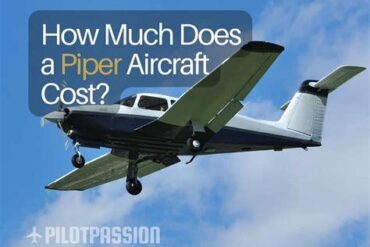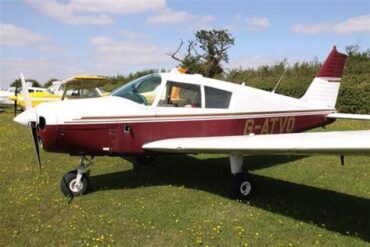The Piper Navajo 310 is a versatile twin-engine aircraft renowned for its reliability, performance, and comfortable cabin space. This article delves into the price and operating costs associated with owning and operating a Piper Navajo 310, providing potential buyers and current owners with essential insights into this aircraft.
Overview of the Piper Navajo 310
The Piper Navajo 310, introduced in the late 1960s, is a well-loved model in the Piper family of aircraft. It is known for its rugged construction, twin-engine performance, and spacious interior. Designed primarily for general aviation, the Piper Navajo 310 is often favored by both private owners and charter operators for its ability to accommodate up to six passengers comfortably.
Pricing of the Piper Navajo 310
When considering the purchase price of a Piper Navajo 310, several factors come into play, including the aircraft’s condition, age, equipment upgrades, and total flight hours. On average, the price range for a used Piper Navajo 310 can vary significantly:
-
Older Models (1970s-1980s): Approximately $60,000 to $120,000
-
Mid-Aged Models (1990s): Approximately $120,000 to $200,000
-
Newer Models (2000s): Approximately $200,000 to $400,000
Prices fluctuate based on the aircraft’s specifications, maintenance history, and current market trends. For potential buyers, it is advisable to consult with aircraft brokers and online listings to gauge the fair market value of the Piper Navajo 310.
Initial Purchase Costs
In addition to the purchase price, there are various initial costs associated with acquiring a Piper Navajo 310:
-
Pre-Purchase Inspection: A thorough inspection can range from $1,500 to $5,000.
-
Taxes and Registration Fees: Depending on the jurisdiction, taxes can range from 1% to 10% of the purchase price.
-
Insurance Costs: Annual premiums for insurance can vary but typically range from $2,000 to $5,000 based on factors such as pilot experience and aircraft value.
-
Financing Costs: If financing the purchase, anticipate interest rates ranging from 4% to 8%, impacting the total cost over time.
Operating Costs of the Piper Navajo 310
The operating costs of the Piper Navajo 310 encompass various recurring expenses, including fuel, maintenance, insurance, and more. Understanding these costs is crucial for budgeting and financial planning.
1. Fuel Costs
The Piper Navajo 310 typically consumes approximately 30 gallons of fuel per hour. Given the average fuel price of $5.00 per gallon, this results in a fuel cost of around $150 per hour. Fuel consumption can vary based on flight conditions, such as altitude, weight, and weather, so it’s advisable to monitor fuel efficiency regularly.
2. Maintenance Costs
Routine maintenance is essential to ensure the safety and performance of the Piper Navajo 310. Here are some common maintenance expenses:
-
Annual Inspection: Approximately $2,000 to $5,000, depending on the extent of work required.
-
Engine Overhaul: Typically needed every 1,500 to 2,000 hours and can cost between $30,000 and $50,000.
-
Propeller Overhaul: Generally required every 3,600 hours, costing around $15,000 to $25,000.
-
Regular Maintenance: Monthly routine inspections can average $200 to $500.
It is crucial to adhere to the manufacturer’s recommended maintenance schedule to prevent costly repairs down the line.
3. Insurance Costs
The cost of insurance varies based on factors such as pilot experience, flight hours, and the value of the aircraft. Annual insurance premiums for a Piper Navajo 310 typically range from $2,000 to $5,000. It’s advisable to shop around and compare quotes from various insurance providers to find the best coverage at a competitive rate.
4. Hangar and Parking Fees
Storing the Piper Navajo 310 securely is essential for protecting the aircraft from environmental damage. Hangar fees can vary significantly based on location:
-
Tiedown Fees: Approximately $100 to $400 per month.
-
Hangar Fees: Approximately $300 to $1,500 per month, depending on the facility and region.
Choosing a hangar location can impact overall costs, especially if flying frequently from a particular airport.
5. Pilot Costs
If hiring a pilot is necessary, costs can range widely based on experience and market demand. Hourly rates for pilots may be around $50 to $150 per hour, depending on the pilot’s qualifications and the specific mission requirements.
6. Other Miscellaneous Costs
In addition to the major expenses mentioned above, several other costs may arise, including:
-
Navigation and Communication Equipment: Regular updates for avionics systems may cost around $1,000 to $5,000.
-
Training Costs: New pilots may incur additional costs for training and type ratings, which can range from $5,000 to $10,000.
-
Depreciation: Consider the aircraft’s depreciation rate, which averages 3% to 5% annually for the Piper Navajo 310.
Total Operating Costs Summary
When considering the total operating costs of the Piper Navajo 310, we can summarize as follows:
| Cost Category | Estimated Cost per Year |
|---|---|
| Fuel Costs | $30,000 |
| Maintenance Costs | $10,000 |
| Insurance Costs | $4,000 |
| Hangar and Parking Fees | $12,000 |
| Pilot Costs | $15,000 |
| Other Miscellaneous Costs | $5,000 |
| Total Estimated Costs | $76,000 |
Conclusion
Owning a Piper Navajo 310 can be a rewarding experience, offering unparalleled versatility and comfort in the skies. However, potential owners must carefully consider the initial purchase price and ongoing operating costs to ensure the investment aligns with their financial goals and flying ambitions. By understanding the costs associated with the Piper Navajo 310, owners can enjoy their aircraft with confidence, knowing they are prepared for the responsibilities of ownership.
In conclusion, the Piper Navajo 310 remains a popular choice for many aviators due to its proven track record, spacious cabin, and operational flexibility. With thoughtful financial planning, it can serve as an excellent asset for both personal use and commercial operations.


















